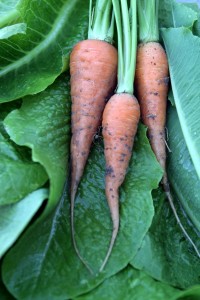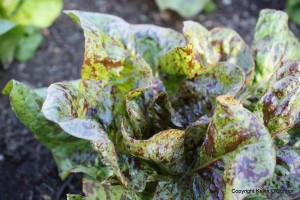
From artichokes and asparagus to spicy greens and sweet peas, there are plenty of things to love about spring vegetables.
These spring vegetables help cleanse your system after months of heavy winter diets. Many of these foods have been shown to strengthen the liver, detoxify the body, protect against cancers, and put pep back into your step … so you’ll have more energy for the longer days approaching.
Here are seven of my favorite spring vegetables to eat now.
Asparagus: Low in calories, this spring vegetable is rich in nutrients like potassium, folic acid, fiber, vitamin C and A. Asparagus has long been used to relieve arthritis and as a diuretic. Uses: Steam and toss with a lemon-herb dressing. Or, sauté with garlic, shallots and herbs and serve with pasta and freshly ground parmesan cheese. Credit for Asparagus/Artichoke photo: Isabel Gomes.
Artichokes: Early Roman scholar Pliny reported artichokes were more esteemed than any other vegetable. The rather odd- looking vegetables are rich in fiber, minerals like magnesium, and a good source of complex B vitamins, vitamin C and other nutrients. Uses: Steam in water with a bit of lemon juice. Then serve with a yogurt-based dip with chives, garlic, herbs and a splash of lemon juice.
Beets: Whether you eat the greens or the roots, it’s clear the beet is a hard veggie to beat. (Sorry I couldn’t resist!). Often cooked slowly or pickled for Borscht, beets have long been used for strengthening the liver and detoxifying the body in folk medicine. The purple-crimson color comes from a powerful anti-cancer fighting phytochemical called betacyanin. Try the orange and red-white striped beet varieties too. Uses: Steam the greens for a meal rich in calcium, iron, folic acid, minerals and vitamins A and C. Roast the roots with garlic and then slice them with feta cheese for salads.
 Carrots and romaine lettuce harvested from an old garden of mine in California. Photo by Isabel Gomes.
Carrots and romaine lettuce harvested from an old garden of mine in California. Photo by Isabel Gomes.
Carrots: Bugs Bunny was right. It pays to eat carrots. They’re an amazing source of vitamin A. Just two carrots provide about four times the recommended daily allowance. Beside other vitamin A and other nutrients, carrots are rich in cartenoids that have been shown to reduce the risk of colon, lung, prostate and bladder cancers. Uses: Grate carrots and add to coleslaws, salads and cakes, such as carrot cake. Or, roast them slowly in the oven with thyme and olive oil, and toss fresh parsley on top.
Peas: Only about 5 percent of peas are eaten fresh, which is another reason to grow them yourself. Just 3/4 cup of fresh peas has more protein than an egg, plus fiber and plenty of vitamin C. Cook peas only slightly or serve raw from the garden. Uses: Toss fresh peas on salads. A pasta dish served with proscuitto, barely-cooked peas, shallots, herbs, chicken stock and feta cheese is an easy and healthy dinner.
Radishes: This crunchy root vegetable deserves more respect in the kitchen, especially if you experiment with the beautifully colored heirlooms. The leafy greens are edible and boast high amounts of vitamin C, plus calcium. The roots come in different shapes and colors, with varying levels of pungency – from mild to hot. Uses: Chop up the roots and leaves to add nutrition and flavor to salads. Or steam radish roots with carrots, and marinate them in an orange-flavored dressing.
 ‘Forellenschluss’ romaine lettuce is a delicious Austrian heirloom, which we have grown in our garden for several years. Photo by Kevin O’Connor.
‘Forellenschluss’ romaine lettuce is a delicious Austrian heirloom, which we have grown in our garden for several years. Photo by Kevin O’Connor.
Spring Greens: You’ll find many different spring greens available now. There are bitter greens like arugula, dandelion and mustard greens, which are excellent for the liver. Also available are lettuces and spicy stir-fry greens, not to mention spinach, chervil and watercress, which need only the shortest cooking times, if at all. High in chlorophyll, these greens also feature vitamin A, folic acid, complex B vitamins and vitamin C, as well as minerals and antioxidants. Uses: Mix and match these nutritious greens into the ultimate spring salad with pine nuts or pumpkin seeds, heirloom radishes, grated carrots and a pinch of feta cheese. Top with a herb-rich vinaigrette.
For more recipes, nutritional information or growing tips, see Grocery Gardening.
Another Valuable Resource: The Encyclopedia of Healing Foods by Michael Murray, N.D.











{ 3 comments }
Teresa, Lots of wonderful Spring vege ideas here! Wondered, do you know if Artichokes need to be Organic? I know some things you can “get away with” being non-organic, if I cannot find..
Hi Kathy: Thanks for the nice note. I usually consult the Environment Working Group’s list http://www.foodnews.org/fulllist.php. But I noticed artichokes weren’t listed there. Drats! I did notice that EWG has an app you can purchase at ewg.org. It probably is mentioned there. Sorry I couldn’t help further. My advice is try and discover who grew the produce. If it’s a farmer’s market, you can always ask how it was grown. Good luck. Teresa
I like to eat my asparagus raw, sometimes right out of the garden or sometimes with a dip of some sort.
Comments on this entry are closed.
{ 3 trackbacks }